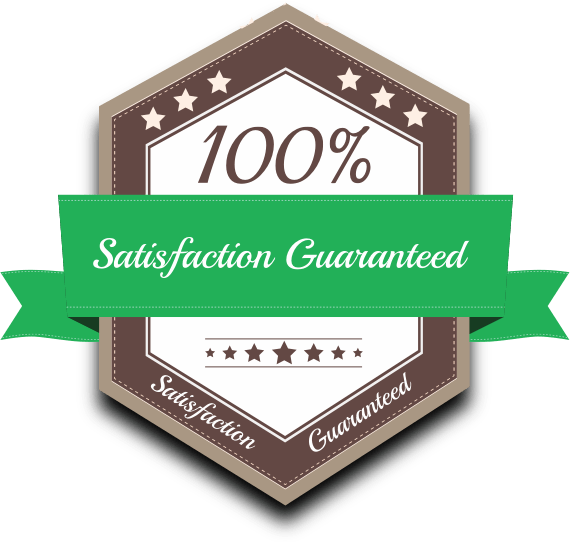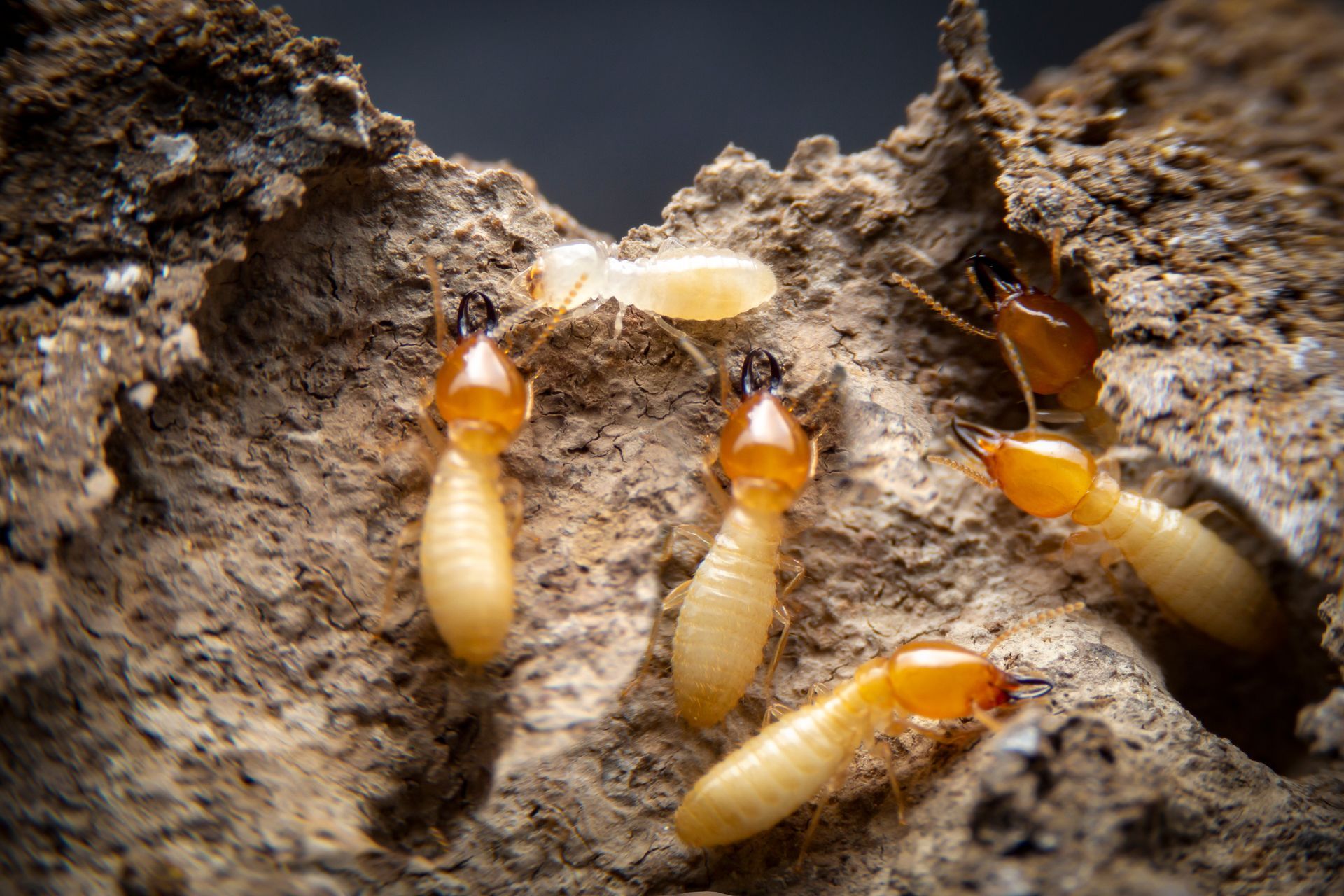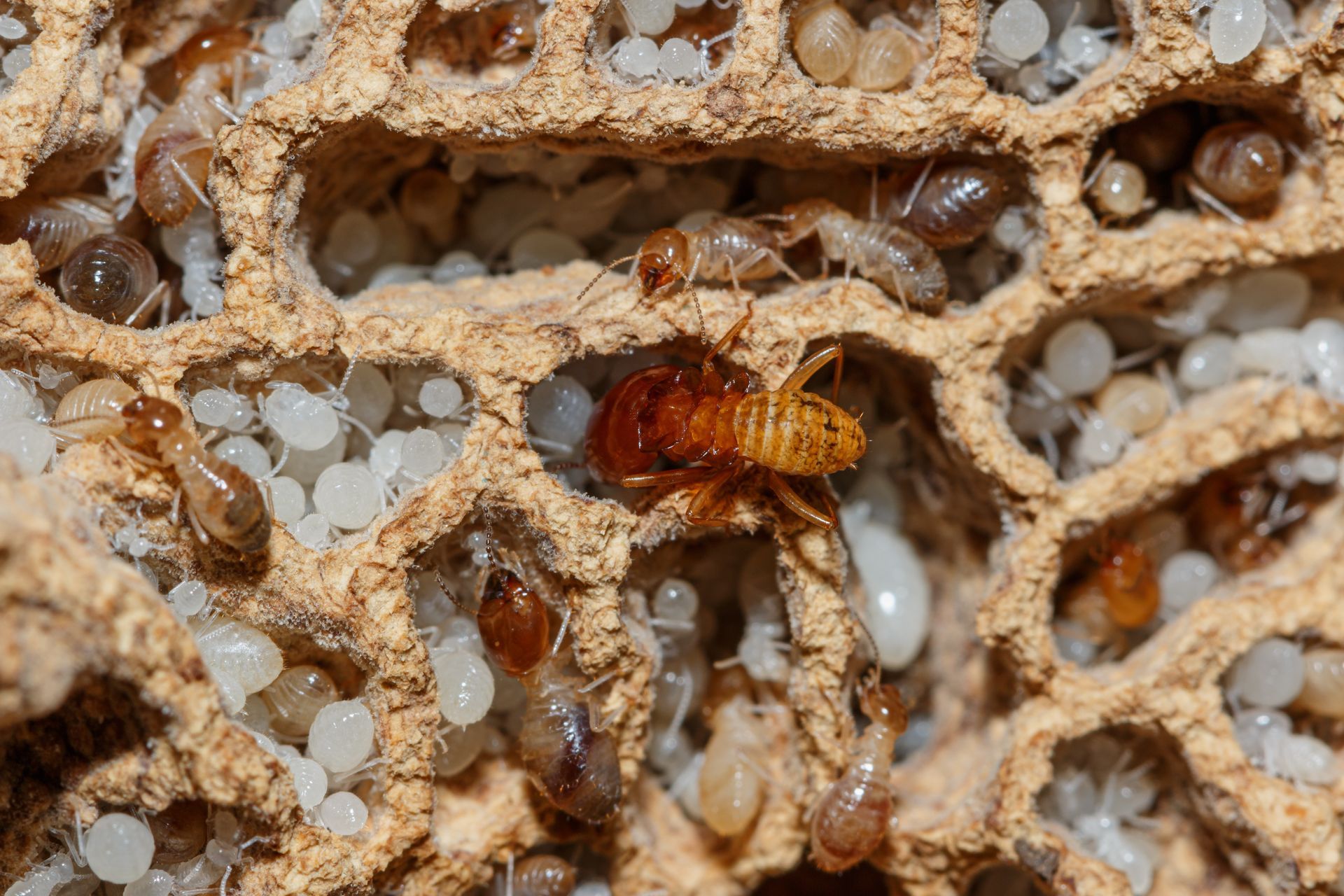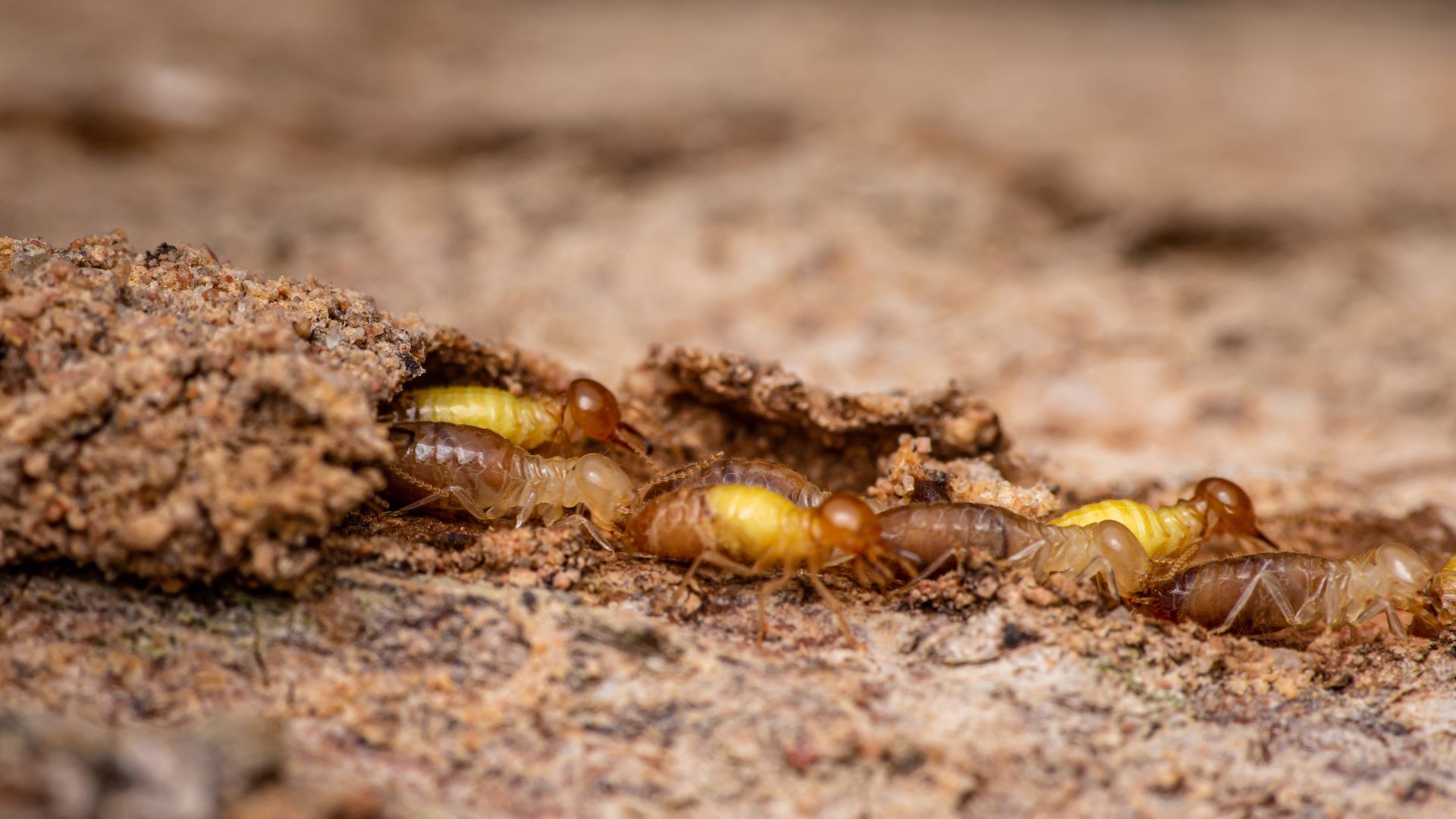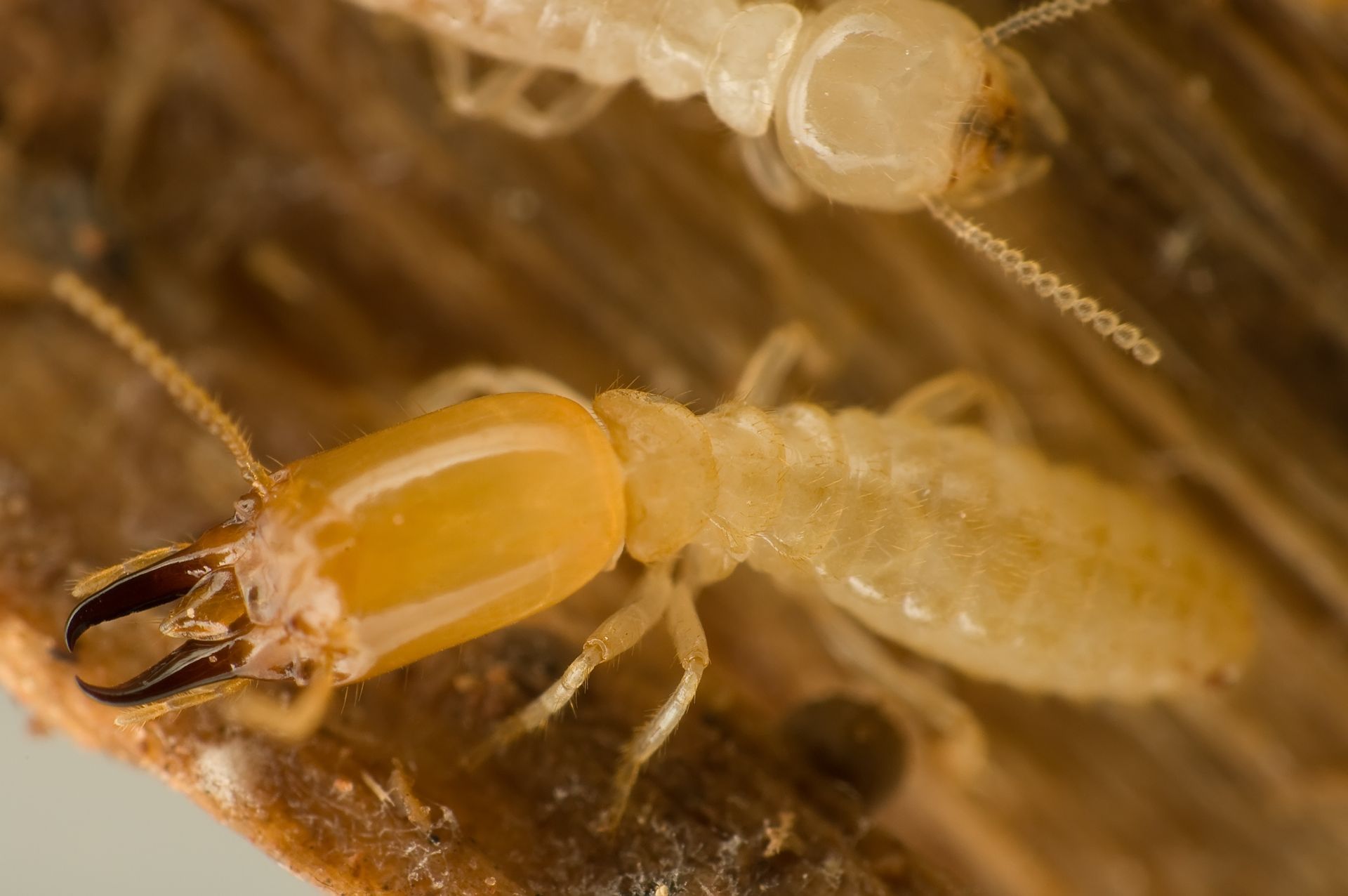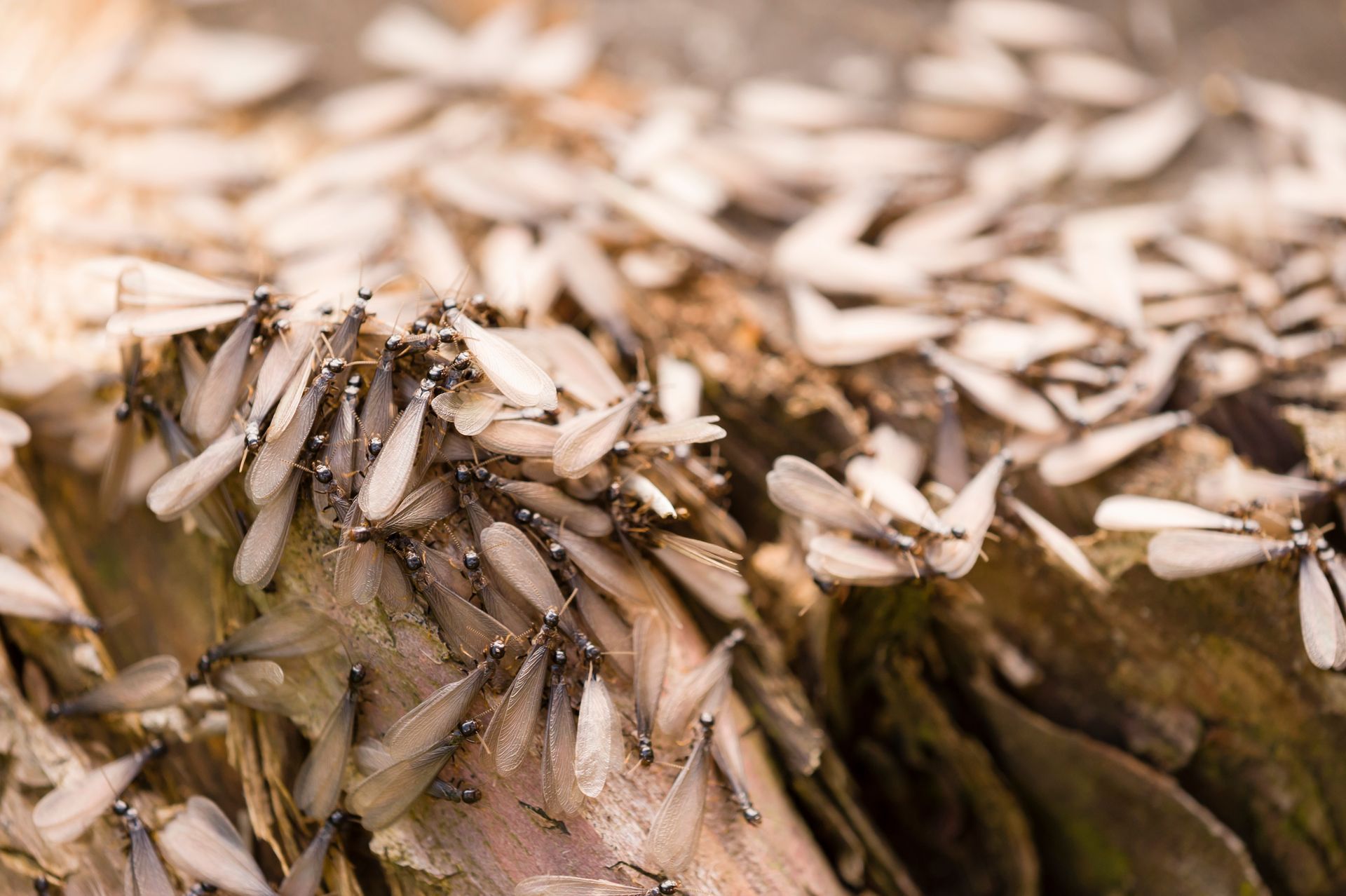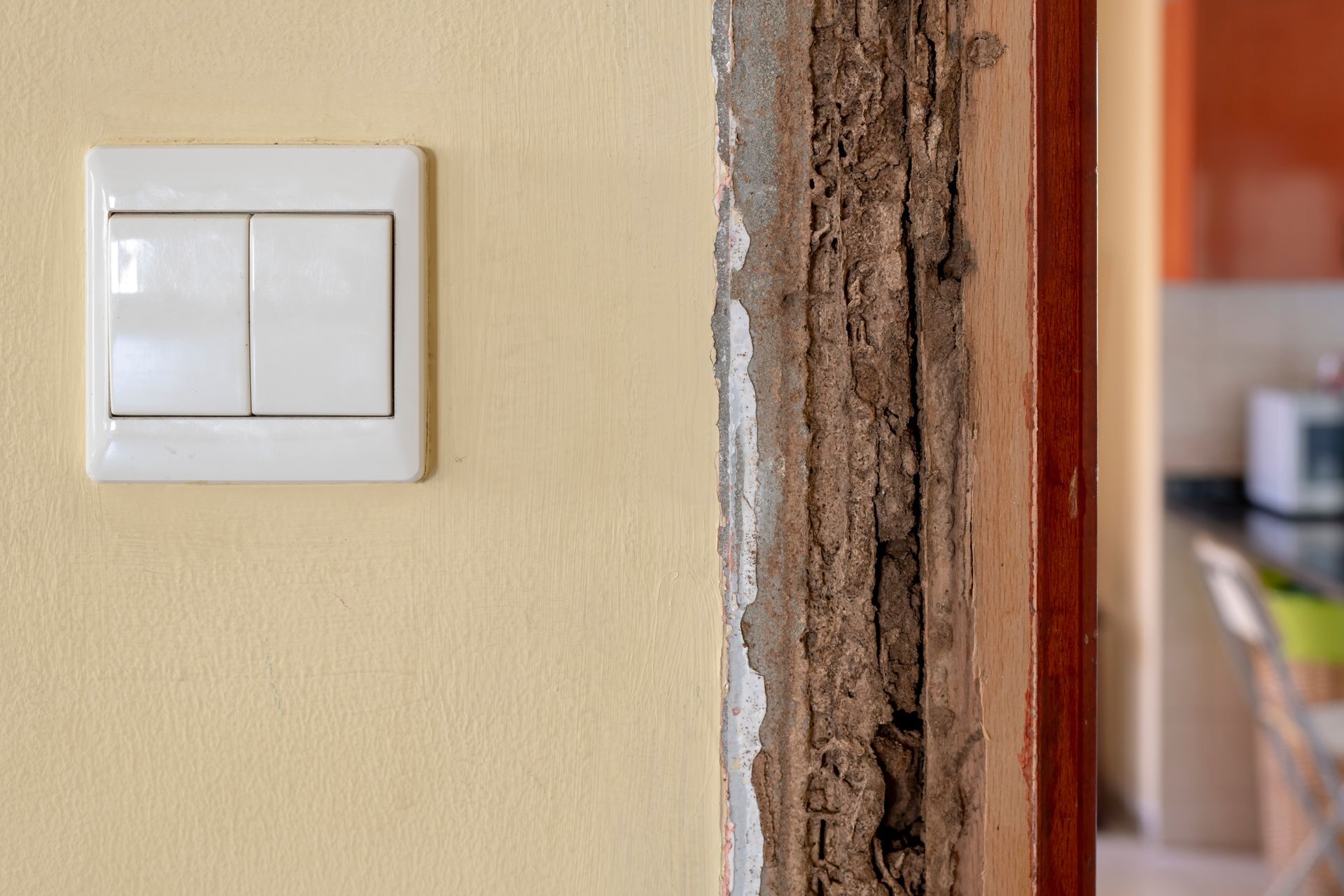Dampwood Termite Treatment and Pest Control Services
Unlike their smaller counterparts, dampwood termites exclusively target wood with high moisture content which creates a unique threat to water damaged areas of your home. They burrow through the weakened wooden structures of your home which results in a network of termite tunnels. They can quietly turn support beams into hollowed out shells that compromise the structural integrity of a building. By the time homeowners notice their presence, the damage may be extensive. At EcoGuard Pest Management, we've developed specialized elimination techniques specifically for these moisture loving pests. Our approach combines advanced detection technology with targeted treatment strategies designed to eradicate colonies while helping you identify the underlying moisture issues that attracted them in the first place.
Call today to a free estimate. 866-350-9954
Pest FREE Guarantee
All Natural Services
Licensed & Insured
Competitive Pricing
Professional Dampwood Termite Control Experts
Successfully tackling dampwood termites requires specialized expertise far beyond general pest control knowledge. Our certified technicians receive extensive training in moisture dynamics, wood deterioration processes, and the unique biology of these specialized wood destroying insects. When our professionals inspect your property, they identify subtle indicators most observers miss like microscopic kick out holes to humidity patterns that signal ideal dampwood termite habitats. This specialized knowledge allows our team to pinpoint colony locations with precision, even in concealed areas, and develop targeted elimination strategies that address both the current localized infestation and the environmental conditions supporting it.
Why Dampwood Termites Are a Serious Problem
Dampwood termite infestations require specialized management for several critical reasons:
- Dampwood termites establish their entire colony inside wooden structures which allow them to create extensive networks of chambers that can span entire support beams. These hollow galleries leave minimal external evidence while progressively damaging crucial structural components from within.
- These pests function as an environmental warning system as their very presence signals serious moisture intrusion that may be damaging your home on multiple fronts.
- Dampwood termite colonies typically develop in areas already weakened and the combination of moisture, fungi, and termite activity accelerates timber deterioration exponentially compared to any single factor alone.
- Their biology creates unique detection challenges because dampwood termites seal their entry points with fecal material to avoid exposure to light and dry air. This secretive behavior means infestations often progress undetected.
How to Get Rid of Dampwood Termites
At EcoGuard, we've developed a comprehensive approach to dampwood termite management tailored to their unique biology:
- Deep Penetrating Foam: Our foam treatment expands within wood galleries which ensures contact with termites throughout their extensive tunnel networks, particularly in areas that traditional treatments can't adequately penetrate.
- Borate Treatments: Borate treatments are uniquely suited for moisture prone environments as they provide immediate colony elimination while creating lasting protection that becomes more effective in humid conditions.
- Precision Injection: Using calibrated micro injection equipment, our technicians deliver targeted termiticides directly into gallery systems without broadcasting chemicals unnecessarily.
- Thermal Remediation: For certain infestation scenarios, we offer specialized heat treatment protocols that eliminate dampwood colonies through carefully controlled temperature elevation.
- Fumigation: While whole structure treatments like fumigation for dampwood termites is often unnecessary, our team may still make this recommendation in the event of severe infestations that exhibit dramatic structural damage from widespread termite activity.
- Preventative Barrier: Our technicians establish protective zones in vulnerable areas, focusing on locations where wood contacts sources of moisture. These preventative measures block termite access to potential entry points.
What Attracts Dampwood Termites
Recognizing what creates ideal dampwood termite habitat is crucial for effective management:
- Chronically Wet Wood: Unlike other termite species, dampwood termites require timber with 25-30% moisture content or higher. Chronically damp wood from plumbing leaks, air conditioner condensation, improper drainage, or persistent roof issues creates ideal conditions for colony establishment.
- Fungal Decay Partnerships: These termites frequently target wood already softened by fungal decay which accelerates destruction. Areas showing signs of wood rot become prime targets, particularly in basements, crawlspaces, and around window frames where moisture problems persist.
- Insufficient Ventilation: Enclosed spaces with poor airflow create microenvironments where humidity remains consistently elevated. Crawlspaces, attics with inadequate venting, and enclosed porches often maintain the perfect moisture levels for dampwood termites.
- Wood to Ground Contact: Wooden elements making direct contact with soil like fence posts, deck supports, and siding create natural highways for dampwood termites. These areas absorb ground moisture which fosters conditions ideal for colony establishment.
Preventing Dampwood Termite Invasions
Effective dampwood termite prevention requires a multifaceted approach focused on moisture control and proper construction practices:
- Create Effective Drainage Systems: Install properly functioning gutters with downspouts that direct water at least 6 feet from your foundation. Grade soil to slope away from structures to prevent water accumulation near your home.
- Implement Vapor Barriers: In crawlspaces and other susceptible areas, install quality vapor barriers to prevent ground moisture from creating humid conditions. Combined with adequate ventilation, these barriers significantly reduce ambient moisture that could elevate moisture content in wood.
- Establish Proper Clearances: Maintain at least 18 inches between soil and any wooden structural components. For decks, fences, and outbuildings, use concrete footers or post anchors to prevent direct soil contact that facilitates moisture transfer into wooden elements.
- Schedule Moisture Inspections: Regularly check likely water intrusion points including roof intersections, plumbing fixtures, windows, doors, and foundation perimeters. Catching and repairing leaks early prevents moisture accumulation.
- Apply Wood Preservatives: For outdoor wood elements unavoidably exposed to moisture, use copper based or borate treatments that deter both fungal decay and termite activity. These preventative applications are particularly important for landscape timbers, fence posts, and deck components.
- Arrange Professional Assessment: Schedule annual inspections with termite specialists who can identify not just existing infestations but the subtle signs of conditions that might eventually support dampwood termite activity. Early intervention prevents extensive damage often associated with established colonies.
Signs of Dampwood Termite Presence
These key indicators help identify dampwood termite activity before extensive damage occurs:
- Wood with Distinctive Galleries: When damaged timber is broken open, dampwood termites leave large, smooth walled chambers connected by tunnels running parallel to the wood grain. These galleries typically contain sections of both severely damaged and intact wood.
- Sealed Kick out Holes: Unlike drywood termites that leave visible pellets, dampwood termites use fecal material to seal small openings in infested wood. These plugged holes appear as darkened areas on wood surfaces and are often slightly raised from the surrounding wood.
- Large Bodied Termites: If disturbed, dampwood termites are notably larger than other termite species. Workers measure approximately ½ inch in length which is significantly larger than the ¼ inch size typical of other termite varieties.
- Termite Swarmers Near Light Sources: During warm, humid evenings reproductive dampwood termites emerge to establish new colonies. These winged termites (alates) are attracted to lights and may appear around windows, light fixtures, or door frames.
- Water Damaged Wood: Soft, spongy wood showing signs of water damage frequently harbors dampwood termites. Areas with visible water staining, warping, or obvious moisture issues should be carefully examined.
- Acoustic Indicators: When active, dampwood termite colonies produce subtle clicking sounds as soldiers bang their heads against gallery walls to signal danger. In quiet environments, placing a stethoscope against suspected timber may reveal evidence of an active infestation.
DIY vs Professional Treatment
While retail stores offer numerous termite control products, their effectiveness against dampwood termites specifically is severely limited. Over the counter local spot treatments typically fail to penetrate deeply enough into affected wood to reach colony cores where reproductive termites reside. Without specialized equipment, DIY efforts often miss the true extent of both the infestation and the underlying moisture issues driving it.
At EcoGuard, our approach begins with comprehensive moisture mapping using advanced detection equipment that pinpoints both existing damage and conducive conditions. We then deploy specialized treatment technologies including deep penetrating borates, targeted injection systems, and expandable foam applications designed specifically for the unique biology of dampwood termites. These professional grade solutions reach gallery networks that consumer products simply cannot access. Additionally, our certified technicians identify and document underlying moisture sources that must be addressed to prevent recurrence.
Industry Specific Dampwood Termite Management
EcoGuard provides tailored dampwood termite solutions for diverse commercial environments facing unique moisture management challenges and structural protection needs.
We deliver expert dampwood termite protection for:
- Hospitality and Lodging Facilities
- Restaurants and Food Service Properties
- Multi-Unit Residential Complexes
- Healthcare and Medical Facilities
- Educational Institutions
- Office Buildings and Corporate Campuses
- Historic Properties and Museums
- Agricultural Structures and Outbuildings
- Waterfront Properties and Marina Facilities
- Lumber and Building Material Suppliers
For immediate service for all of your termite control concerns please call 866-326-2847 or complete this form.
EcoGuard Protection Guarantee
We stand firmly behind the effectiveness of our dampwood termite elimination protocols. Should you experience any termite activity in treated areas during your service agreement period, our response team will conduct comprehensive reassessment and deliver all necessary retreatment without additional cost. Our commitment includes quarterly follow up inspections during the first year, ongoing monitoring of moisture conditions, detailed documentation of all findings and treatments, and retreatment for any remaining termite activity. This comprehensive protection approach ensures not just immediate elimination but continued vigilance against the environmental conditions that might support future dampwood termite activity.
Dampwood Termite Pest Control Process
Inspection: Our specialists begin with thorough property evaluation targeting moisture prone zones, water damaged areas, and regions with elevated humidity levels. Using advanced detection technology, we map both active infestations and high risk conditions throughout your property. This systematic examination reveals the full scope of both current dampwood termite activity and potential future vulnerability points.
Treatment: Based on our detailed assessment findings, we develop a property specific treatment protocol combining multiple elimination strategies. This integrated pest management approach typically includes targeted wood injections, borate applications to compromised timber, specialized treatments for inaccessible areas, and preventative measures for vulnerable zones.
Prevention: Beyond direct termite elimination, our technicians document all conditions supporting dampwood termite activity. While our focus remains pest elimination rather than repair services, we provide detailed recommendations regarding ventilation improvements, drainage corrections, and moisture management practices essential for long term protection.
On Going Monitoring: Following treatment implementation, we conduct systematic follow up inspections using our advanced detection equipment to confirm complete colony elimination. This continuous monitoring approach ensures early detection of any changes that might indicate renewed termite presence or developing conducive conditions.
Seasonal Approach to Dampwood Termite Management
Spring: As temperatures rise dampwood termites enter their primary expansion phase. Our spring protocols focus on comprehensive property inspections targeting areas where winter moisture may have created new habitats, treatment of any overwintering colonies before they expand, and preventative applications to vulnerable areas.
Summer: Warmer months bring peak reproductive activity as mature dampwood termite colonies produce winged swarmers that establish new infestations. Our summer strategies emphasize monitoring for these reproductive emergences, swift intervention at newly established colony sites, and focused treatment of outdoor structures.
Fall: Our fall approach centers on treating existing termite galleries before colonies can establish winter protection, addressing new moisture intrusions from fall weather patterns, and implementing preventative barriers that block termite access to structures during their pre-winter movement period.
Winter: While outdoor activity decreases, dampwood termites remain active within temperature stabilized structures during winter months. Our winter protocols leverage this period for detailed interior inspections when colonies are concentrated.
Essential Information About Dampwood Termites
What kills dampwood termites?
Professional termiticides applied through targeted wood injections, specialized borate treatments, and foam applications effectively eliminate dampwood termites by penetrating deep into their galleries. The most effective approach combines these chemical treatments with moisture remediation, as dampwood termites cannot survive in wood that has been properly dried. For severe infestations, thermal remediation can also be effective by raising timber temperatures to levels lethal to the entire colony.
Should you worry about dampwood termites?
Dampwood termites should be taken seriously as they can cause significant structural damage by hollowing out support beams, floor joists, and other load bearing elements while leaving thin outer shells that mask the destruction within. Even more concerning, their presence signals underlying moisture problems that could be damaging your home in multiple ways beyond just the termite activity. Early intervention is critical since established colonies can compromise structural integrity to the point where sudden failures occur without visible warning signs.
What is the most effective termite control?
The most effective dampwood termite control combines professional grade termiticide applications like Termidore that target infested wood with comprehensive moisture management to eliminate the conditions these pests require. Borate treatments are particularly effective for dampwood species as they leverage the high moisture content in affected wood to penetrate deeply and provide long lasting protection. No single approach works in isolation and effective control requires an integrated strategy addressing both the insects themselves and the environmental factors supporting their activity.
How much damage can Pacific dampwood termites cause?
Pacific dampwood termites are capable of reducing the strength of support beams by 80% which risks a collapse even if the wood looks safe from its exterior. A mature colony with thousands of workers can severely damage a standard support beam within 18-36 months, with damage often concentrated in critical structural elements where moisture problems exist. The financial impact extends beyond repair costs to include decreased property values, potential insurance complications, and expenses associated with correcting the underlying moisture issues that enabled the infestation.
What actually differentiates dampwood termites from other wood destroying organisms?
Dampwood termites require wood with high moisture content (25-30% minimum) and are significantly larger than other termite species, with soldiers reaching nearly an inch in length. They establish their entire colony directly within the wood they consume rather than maintaining soil connections and create distinctive smooth walled chambers following the wood grain instead of the disorderly galleries seen with other wood pests.
How does local climate affect dampwood termite risk levels?
Coastal regions face higher dampwood termite risk due to elevated humidity and salt air that accelerates wood deterioration. Areas with heavy rainfall, high water tables, or foggy microclimates maintain moisture levels conducive to infestation, while properties with extensive irrigation may create localized dampwood termite habitats even in otherwise arid regions.
Why do dampwood termites target specific areas of homes while ignoring others?
Dampwood termites look for moisture weakened wood and will avoid wood that does not have moisture content high enough to sustain their survival. These areas commonly include bathroom subfloors, attics, and window frames exposed to driving rain. Their preference for fungally compromised wood and aversion to light keeps them concentrated in already decaying, concealed areas rather than spreading randomly throughout a structure.
What misconceptions do homeowners typically have about dampwood termites?
Many homeowners incorrectly believe that fixing moisture sources alone will eliminate existing dampwood termite colonies, when established dampwood termites can survive for months in previously dampened wood even after external moisture sources are corrected.
How rapidly can dampwood termites damage structural elements?
While initial colony establishment proceeds gradually, mature dampwood termite colonies (2-3 years old) can compromise a standard support beam within 18-36 months. Their unique damage pattern creates particularly dangerous conditions by leaving thin shells of intact wood that maintain appearances while internally reducing load bearing capacity by 65% - 80%.
Do professional termite inspections typically identify dampwood termites specifically?
Standard termite inspections often miss dampwood termites as they focus primarily on subterranean termite indicators rather than conducting comprehensive moisture assessment. At EcoGuard, our specialized protocols incorporate moisture mapping and acoustic detection equipment that can identify dampwood activity even when hidden within structural elements.
Will addressing leaks and moisture problems eliminate existing dampwood termite colonies?
While moisture remediation is essential for long term prevention, established dampwood termite colonies can continue surviving in previously dampened wood for 6-18 months even after external moisture sources are corrected. Our integrated pest management approach combines direct colony elimination through targeted treatments with moisture management recommendations, ensuring both immediate eradication and long term prevention.
Are dampwood termites more difficult to eliminate than other termite species?
Dampwood termites present unique treatment challenges as they establish deeper within larger timbers and preferentially infest already compromised structural elements where treatment stability may be affected. However, their biology also creates advantages because their colony structure eliminates the need for soil treatments required for subterranean termite species.
How does wood moisture content affect dampwood termite treatment effectiveness?
Wood moisture significantly impacts treatment efficacy as conventional liquid termiticides often face dilution in high moisture environments. Specialized borate treatments leverage high moisture content because it uses water as a transport mechanism to penetrate deeply into affected timber. This makes them particularly effective against dampwood termites. Our technicians measure wood moisture at multiple depths before treatment, adjusting formulations and application methods accordingly.
What structural warning signs suggest dampwood termite activity rather than general water damage?
Unlike simple water damage, dampwood termite affected wood produces a distinctive hollow sound when tapped and reveals clean, smooth walled galleries following grain patterns when broken. Look for sealed kick out holes (appearing as slightly raised dark spots) and probe testing that shows inconsistent resistance as tools encounter alternating damaged and intact wood sections rather than uniform softness typical of water damage alone.
Can dampwood termites spread from one property to neighboring structures?
Unlike subterranean termites that travel through soil, dampwood termites primarily spread between properties through winged reproductive swarms that can fly several hundred yards, or through infested wood transport (shared firewood, lumber, construction materials). The risk increases significantly between properties sharing similar moisture issues, particularly in connected structures where water intrusion in one unit can create favorable conditions in adjoining spaces.
Are certain building materials more resistant to dampwood termite attacks?
Naturally resistant woods like cedar, redwood, and cypress contain extractives toxic to termites which provide inherent protection even in moisture prone applications. Properly pressure treated lumber creates chemical barriers against termites, while modern composite decking materials resist both moisture absorption and termite attack. Conversely, untreated pine, particleboard, and OSB create elevated risk by readily absorbing and retaining moisture that attracts dampwood termites.
What health and safety considerations apply during professional dampwood termite treatments?
Our dampwood termite protocols prioritize safety through targeted injection systems that place treatments directly into affected wood rather than broadcasting chemicals. We utilize borate based products with extremely low toxicity profiles and precise application methods that minimize exposure potential. Typically, residents need only vacate immediate treatment areas for 1-4 hours, with specialized protocols available for homes with pregnant occupants, those with respiratory sensitivities, or exotic pets.
How do construction practices impact dampwood termite vulnerability?
Building design elements that increase dampwood termite risk include inadequate roof overhangs allowing rain penetration, insufficient crawlspace ventilation, improperly sloped shower pans, missing flashing at roof intersections, and unsealed plumbing penetrations. Protective practices include proper vapor barrier installation, adequate ventilation, appropriate grading, proper window/door flashing, and correctly sized gutters with functional downspout extensions that direct water away from the structure.
How do environmental practices like irrigation and landscaping affect dampwood termite risk?
Irrigation practices that increase risk include sprinklers wetting exterior walls, drip systems too close to foundations, excessive watering creating chronically damp soil, and nighttime watering preventing adequate evaporation. Problematic landscaping includes organic mulch against foundations, dense shrubbery limiting airflow, raised planters against exterior walls, and poorly drained decorative water features which all create moisture conditions that attract dampwood termites.
Are professional dampwood termite treatments environmentally responsible?
Our environmental approach employs precise delivery systems including microinjection technology that minimizes chemical volume while maximizing effectiveness. We prioritize borate based products derived from naturally occurring minerals with minimal environmental persistence, and our integrated management approach emphasizes physical prevention through moisture control. For properties near sensitive environments like waterways or organic gardens, we offer specialized protocols with additional safeguards.
What documentation should I receive from professional exterminators after dampwood termite treatment?
Following our treatment, you'll receive comprehensive documentation including a detailed termite inspection report with moisture mapping of your structure, specific treatment details (products, methods, locations), and a termite warranty certificate outlining coverage terms. We also provide moisture management recommendations prioritized by urgency and Wood Destroying Organism reports meeting all state regulatory requirements for insurance and real estate purposes.
How has climate change affected dampwood termite distribution and activity patterns?
Climate change has expanded dampwood termites' viable range northward by approximately 150-200 miles over the past three decades. Changing precipitation patterns create ideal conditions for colony establishment through intense rainfall events followed by warming periods, while extended activity seasons result from earlier spring warming and later fall cooling.
Additional Termite Resources
Additional Pest Commonly Treated
See our Pest Library for a full list of insects we treat for. If you don’t see what you are looking for give us a call. We are always here to help! EcoGuard Pest Management provides eco-friendly services for both residential and commercial properties.
Why Choose EcoGuard?
- A pest free guarantee
- Green & ecofriendly pesticides that are state approved
- Licensed, bonded, and insured services
- Competitive pricing



